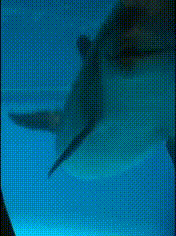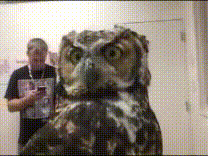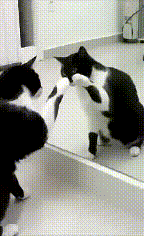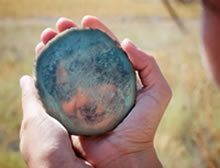MIRRORS
This page is still being developed. So it's a bit rough in some places, but the ideas are new and, they're well worth reading.
Parent Page : Abstract Reality vs. Panaral Reality
Since around 1850, with the industrial production of cheap mirrors, our human ego – our individual and social self-image – has changed enormously.
Our individual and collective idea of self-image rose from the occasional murky depths of reflections in water to a vivid everyday experience – clear, manifest, and tangible.
Mirrors mark the beginning of a Cultural Revolution in identifying with our projected image.
We started to literally, practically, and physically, focus on ourselves. We became our own focal point. Our self-image was given material form and practical expression.
We started to become independent of others opinions about our appearance.
Not having to rely on anyone else to tell you how you looked had enormous social repercussions.
We could see for ourselves how we appeared to others, with all the self-doubt or self-confidence involved. How we compared to others, with all the feelings of embarrassment or self-assertion.
Mirrors led to a multitude of secondary developments in make-up, fashion, and social expectations about appearance.
History
Mirrors have a long history. For thousands of years, the super rich could admire their reflection in highly polished black obsidian (a naturally occurring volcanic glass), and metals (copper, bronze, and silver).
After weeks of work by the palace mirror polisher, all of these gave near perfect reflections. In these horizontal images, princes and princesses could entertain vanity and enhance their make-up.
Commoners could only "see through a mirror darkly" (1 Corinthians 13:12) by looking downwards at black water when the sun or moonlight was just right.
Glass blowing techniques enabled dim light inside palaces and churches. Polishing a flattened sheet of a glass bubble to an even thickness – large enough to reflect the human face – was incredibly time-consuming, and only gave distorted reflections.
Plate glass was first made in the late 1600s. But it wasn't until the industrial revolution that in 1835 Justus von Liebig, developed the silvered-glass method where a thin layer of metallic silver is applied to plate glass.
This led to cheap industrially manufactured mirrors around 1850.
For the first time in history ordinary people could buy a mirror. It must have been quite a trend – everyone wanted one.
Photographs and cameras to fix a self-image in time, also developed slowly over centuries, but they weren't cheap, and photos were mostly to remind us of how other people looked.
Most people know the story of moving pictures and videotapes to record our reflected image, but for the common person nothing could compare with the mirror, until around 2000 with the cell phone and then selfies. And then, since 2011, image filters became easily available to enhance our projected image.
Animals and Mirrors
Animal identity is completely different to our modern human sense of identity.
Very few animals can cope with mirrors. Mirrors are unnatural. Most animals run away scared or attack their own mirror image. But then, most wild animals are scared of anything new and unexplainable.
Research here is far from complete. So far we know that dolphins, crows, magpies, orcas, orangutans, manta rays, and surprisingly ants can recognise themselves spontaneously.
From what i've seen and learnt great apes, elephants, and gorillas take a little time, and chimpanzees even longer, before they can recognise themselves.
 Bottlenose dolphin babies take till 6 months old to understand what's happening in a mirror, human children take 18 months.
Bottlenose dolphin babies take till 6 months old to understand what's happening in a mirror, human children take 18 months.
Often animals start indulging in new forms of so-called self-directive behaviour like looking into their own mouths.
 Pigeons sometimes recognise themselves, maybe this depends on if they're modern city pigeons and familiar with vague reflections in shop windows and other crazy human inventions. Domesticated owls who are obviously familiar with other human inventions will manoeuvre for position in a mirror faced camera.
Pigeons sometimes recognise themselves, maybe this depends on if they're modern city pigeons and familiar with vague reflections in shop windows and other crazy human inventions. Domesticated owls who are obviously familiar with other human inventions will manoeuvre for position in a mirror faced camera.
Wild octopi sometimes sponatneously attack mirrors, but a pet octopus who has lived in a glass tank with its inevitable reflections, and a familiarity with human inventions, will spontaneously recognise and explore their reflections.
 Domesticated cats – even when acquainted with humans and their vacuum cleaners and dishwashers – have notoriously hostile relationships with mirrors, but possibly will eventually develop quasi mystical experiences of self realisation. (It's worth watching this entire video - dawn of new understanding - 1.35 min)
Domesticated cats – even when acquainted with humans and their vacuum cleaners and dishwashers – have notoriously hostile relationships with mirrors, but possibly will eventually develop quasi mystical experiences of self realisation. (It's worth watching this entire video - dawn of new understanding - 1.35 min)
I suspect with time and experience, and general familiarity with the crazy world of human mysteries many more animals would understand the experience.
Imagine humans when first seeing a plane, a telephone, or even a giraffe, even if we're not scared, we want to know how it works before we can accept it.
Animals drinking at water holes must see various degrees of self reflection every time they bend down to drink, and in the right conditions this can be crystal clear. So, i don't really understand why the crystal clear horizontal reflection typically causes such adverse reactions.
YouTube has lots of videos on this subject. YouTubers and tiktokers seem to think it's a valid experiment, taking mirrors into the wild among animals who aren't accustomed to humans. These animals aren't only reacting to a mirror. An unexplainable UFO has landed, and things are moving inside it. I would like to compare this with animals spontaneous reaction when first confronted with a double-decker bus in their wild natural habitat.
 I still can't imagine how primitive man would have reacted when he first held a broken piece of raw obsidian in the hand. Was this the devil? God? a spirit?
I still can't imagine how primitive man would have reacted when he first held a broken piece of raw obsidian in the hand. Was this the devil? God? a spirit?
Terrified he'd have dropped it, curious he'd have picked it up again. He'd have been haunted by the memory his whole life, told the story to his children. Others would have experienced it, they'd have been curious – it would become a holy place, or maybe forbidden and taboo.
Back to Chapter Three : Civilisation's Habitual Ruts
Back to THE PANORAMA SENSES Priority Pages